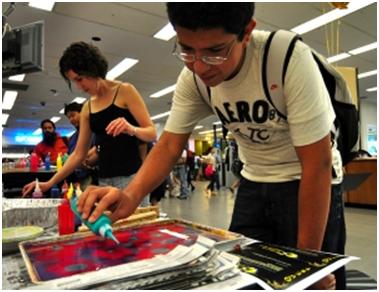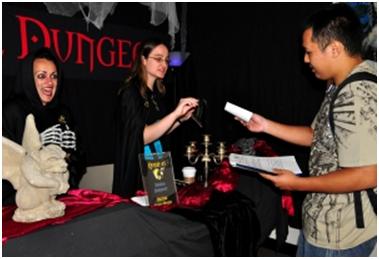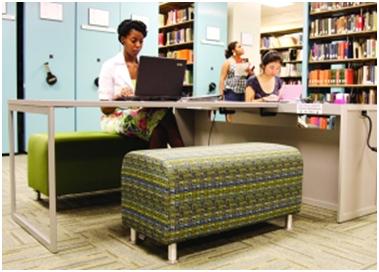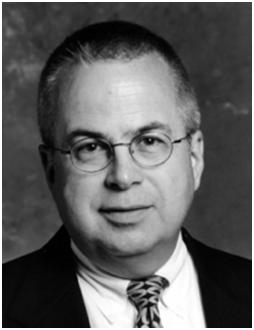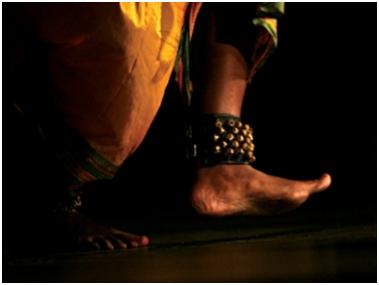|
Written by Shambhu Sharan, The Shorthorn senior staff |
|
Tuesday, 25 August 2009 08:41 PM |
|
Engineering freshman Gustavo Robles takes part in paper marbling Tuesday in the Central Library. This activity was offered during the World of LibraryCraft event along with tasks that informed students about library services. (The Shorthorn: Meghan Williams) Library assistant Kevin Schuck’s yellow foam exclamation mark hat told people he was the one to talk to. The Central Library organized World of LibraryCraft on Tuesday to educate students about library resources. The event was based on the massive multiplayer online role-playing game World of Warcraft. In WoW, quest givers have yellow exclamation marks over their heads. Public services librarian Lea Worcester and Rafia Mirza, reference and instruction librarian, handed out fliers with two quests printed in both plain English and a dialect similar to that used in WoW. After completing all 12 quests, students got access to the game room and received free lunch. More than 45 library staff members helped students by answering their questions, playing games and distributing food. Content librarian Lynn Johnson and Karen Horsfall, Digital Library Services coordinator, handed out a survey. The form asked students what they thought about the event, where they heard about it and which book cart was decorated the best. Library staff members Candy McCormic, left, and Christy Allan assist computer science freshman Johnny Weng through his quest to the ultimate game room Tuesday in the Central Library as part of World of LibraryCraft. An event like this is held every year to inform students about the services offered by the library in a fun way. (The Shorthorn: Meghan Williams) Horsfall said students engaged in various department competitions. Four departments participated in the book cart competition. Schuck said the event was excellent and had positive impacts. “The format of the event was different from those of the past, enabling us to collect more data and those results are in the early stages of evaluation,” Schuck said. “However, it appears we made last year’s participation, and a survey of the evaluations indicates a very high percentage of the students loved the event.” English sophomore Joseph Thron said he had fun walking around and meeting people. “I learned about a lot of resources the library has,” Thron said. “Although I don’t use mapping software, it was interesting to know about it. It helps students to do research. It was fun being here, playing games and learning about the library.” Archivist Claire Galloway handed out candies and interlibrary loan manager Rachel Robbins helped with different patterns in a marbleizing painting game. “All of the excellent and wonderful volunteers helped to make it an outstanding event,” Schuck said. “The purpose was to educate students about the resources of the library and teach students resources available to the students.” Music freshman Benjamin Morgan said he got involved due to free food. He was glad to participate and had a fun experience, he said. Industrial engineering junior David Ebenezer said he played video games and asked the librarians questions. “I went to different desks to ask questions and learned about the library,” Ebenezer said. “It was really creative and cute. I think the library put a lot of work into it.” |
http://www.theshorthorn.com/content/view/17412/265/


